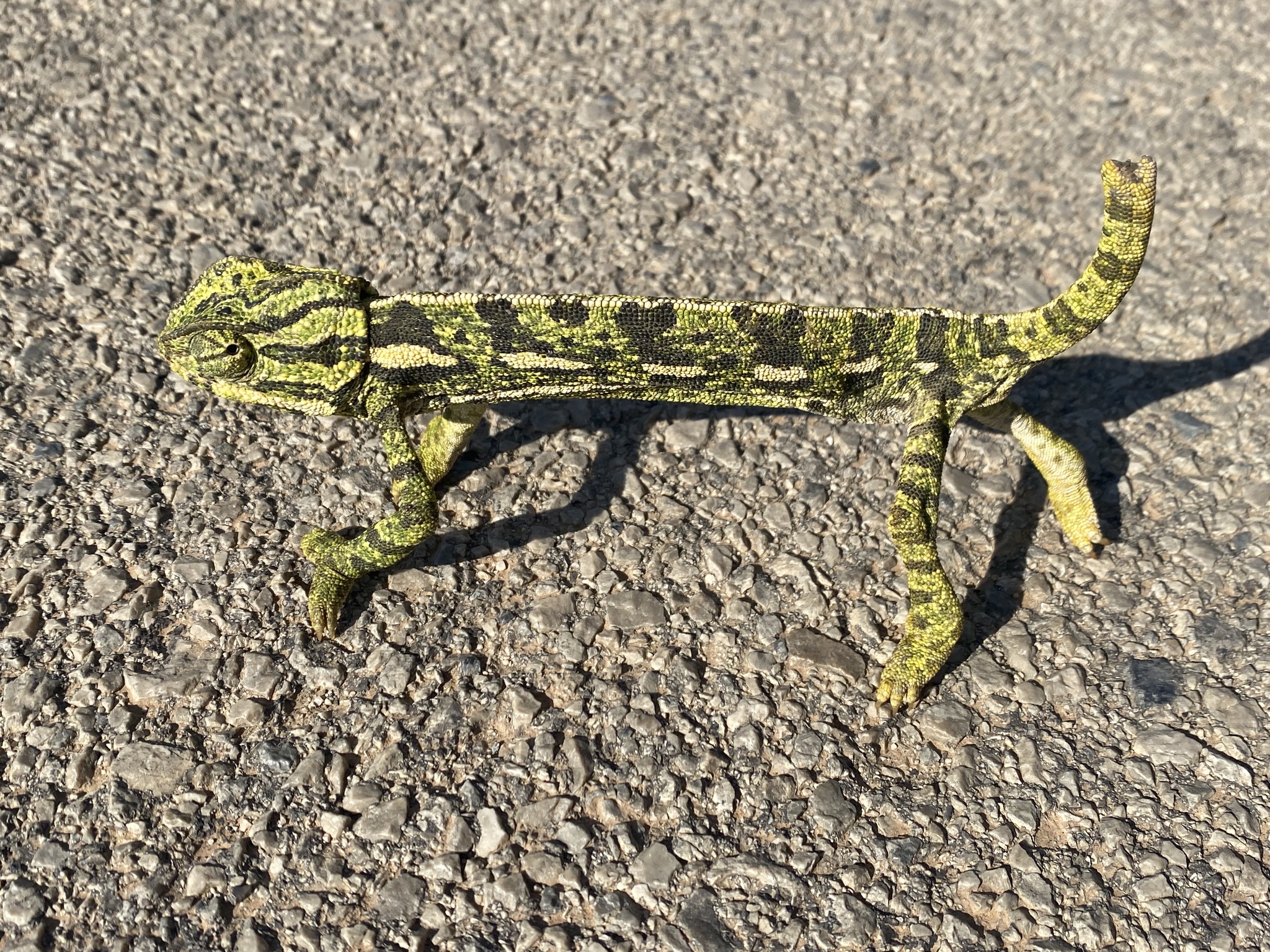There have only been a few fossil finds of reptiles from Morocco so far, especially concerning Agama bibronii and Chamaeleo chamaeleon. Archaeologists from the National Institute of Archaeology and Cultural Heritage (Institut National des Sciences de l’Archéologie et du Patrimoine, INSAP) in Rabat, Morocco, have now published an overview of Moroccan finds.
The rock cave of Ifri n’Ammar belongs to the Rif mountain range, which runs about 50 km away from the northeast coast of Morocco and is part of the Atlas Mountains. Ifri n’Ammar is located in a valley south of the town of Afso, on the border of two wadis. Since 1997, excavations have been led there by INSAP and the German Commission for Archaeology of Non-European Cultures (KAAK). Two Os prefrontale, two Os postorbitofrontale, three Os maxillare (upper jaw), six pieces of bone with acrodont teeth, and three vertebrae could be assigned to the family Chamaeleonidae so far. The distinction from fossil remains of agamas was quite clear: agamas have pleurodont teeth in the anterior region of the maxilla, whereas chameleons have only acrodont teeth. In addition, the shape and position of the nostrils differ. Agamas also do not have the bony tubercles and “crests” typical of chameleons. Since Chamaeleo chamaeleo is the only representative of the chameleons found in the Maghreb today, the fossils were attributed to this species.
The fossils were all found in a layer at a depth of three meters, which is assigned to the Middle Stone Age. The fossil remains are therefore between 83,000 and 171,000 years old, which is considerably older than the remains discovered so far for chameleons in Morocco (Tarofalt, Guenfouda) and Algeria (Gueldaman). The archaeologists assume that at that time the area around the site must have still been tree-covered.
It is partly questionable how the pieces of bone from Ifri n’Ammar arrived at the finding sites. Traces on some bones indicate digestion processes and thus that the associated chameleons were consumed as prey. So not all of the chameleons found there died a natural death. According to the traces, birds of prey and small carnivores such as the gundi (a North African rodent) or simply rats could be possible predators.
Agama bibronii (Sauria: Agamidae) et Chamaeleo chamaeleon (Sauria: Chamaeleonidae) d’Ifri n’Ammar (Rif oriental, Maroc)
Touria Moushine, Fethi Amani, Abdeslam Mikdad
Quaternaire 33 (03), 2022
DOI: 10.4000/quaternaire.16948


